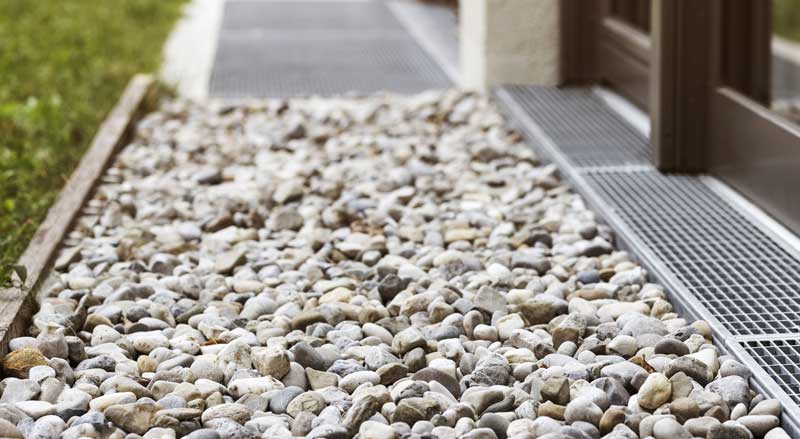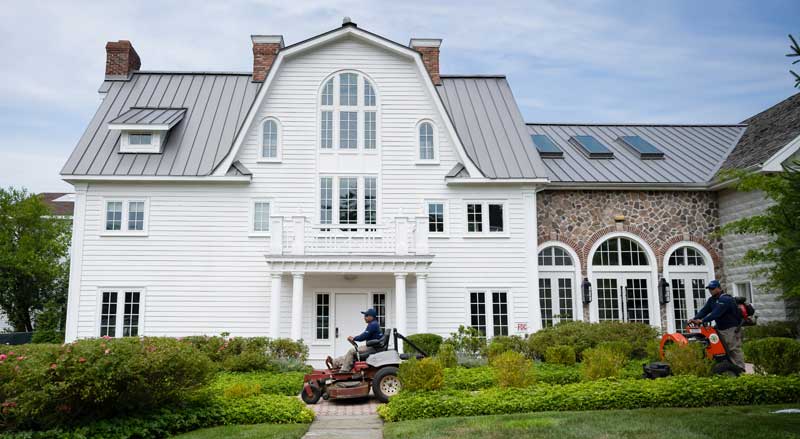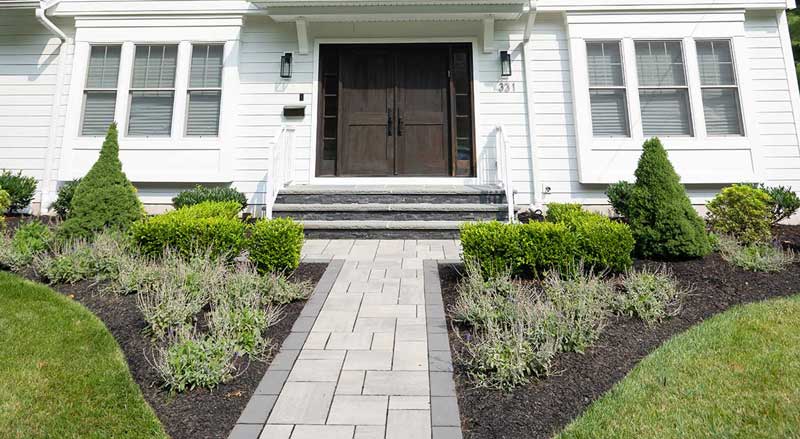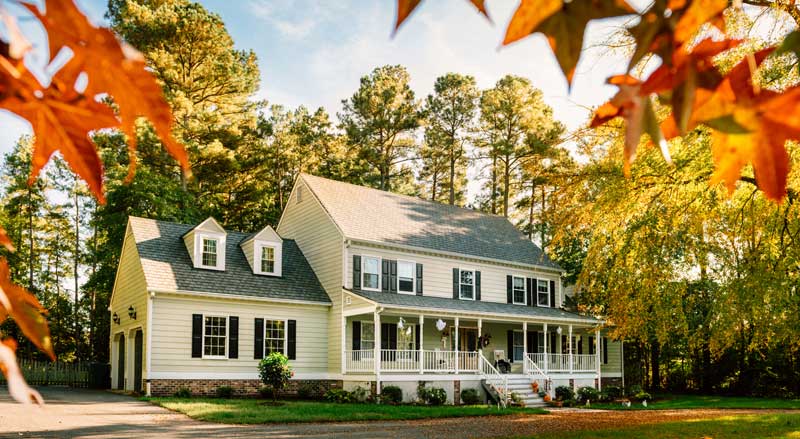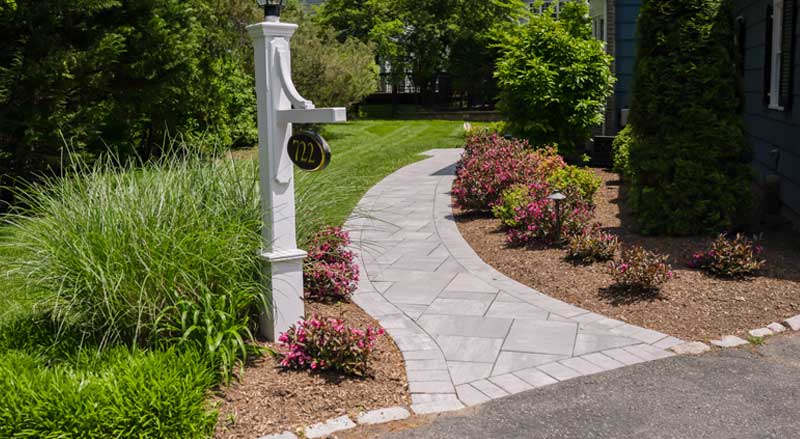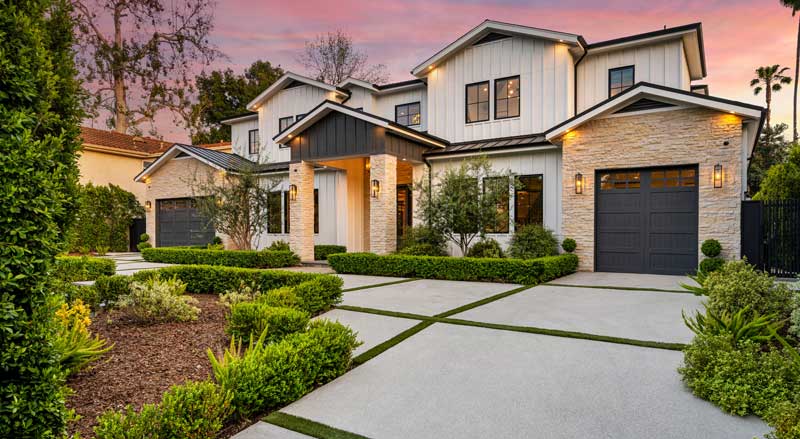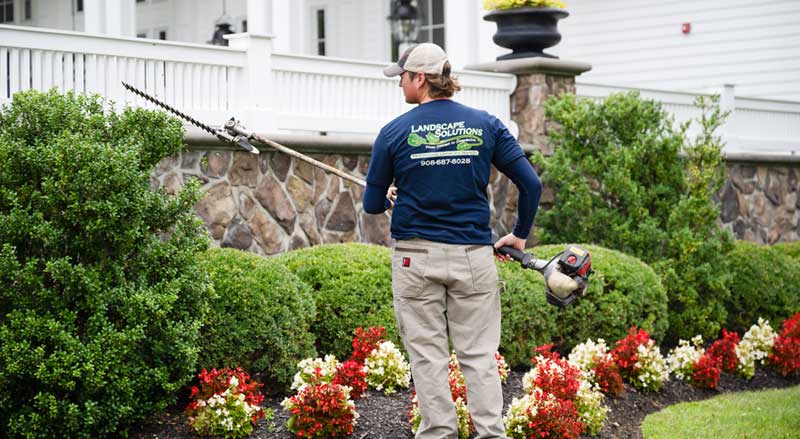Spring in New Jersey, particularly in Union, Morris, Essex, and Somerset counties, often brings substantial rainfall. Proper grading and drainage solutions are fundamental aspects of effective landscaping, playing a crucial role in maintaining the health, functionality, and aesthetics of your outdoor space. Neglecting these elements can lead to a host of problems, including yard flooding, water pooling, soil erosion, and even structural damage to your home. Understanding the importance of landscape drainage and implementing appropriate water management solutions ensures a sustainable and beautiful outdoor environment.
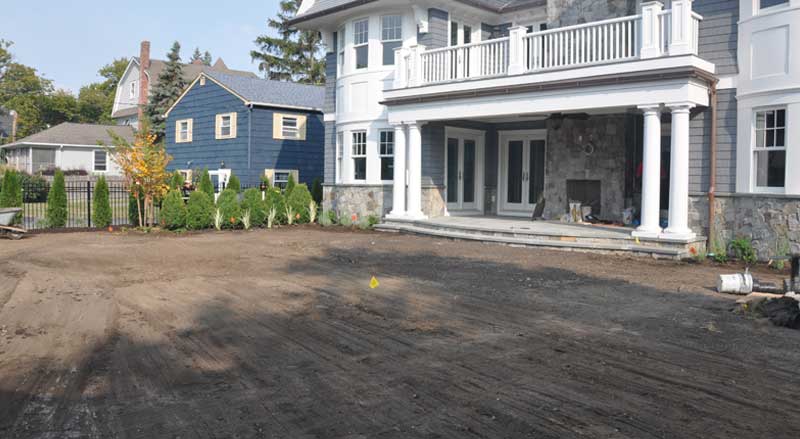
Understanding Grading in Landscaping
Grading refers to the intentional shaping or sloping of land to facilitate water drainage away from structures and prevent accumulation in undesirable areas. A well-graded yard directs water flow efficiently, reducing the risk of water-related damage.
The Importance of Proper Grading
- Protects Home Foundations
- Improper grading can causewater to pool near your home, putting pressure on your foundation over time. This can lead to cracks, leaks, and structural damage.
- Prevents Soil Erosion
- Without proper grading,water runoff can erode topsoil, depleting nutrients essential for healthy plant growth and leading to landscape deterioration.
- Enhances Plant Health
- Excess water can drownplant roots, while insufficient moisture can cause drought stress. Proper grading ensures balanced moisture distribution, promoting lush greenery.
- Improves Usability and Aesthetics
- A well-graded landscape prevents waterlogging, making your yard more usable and visually appealing. Dry, stable ground is essential for outdoor activities and maintaining hardscaping elements like patios and walkways.
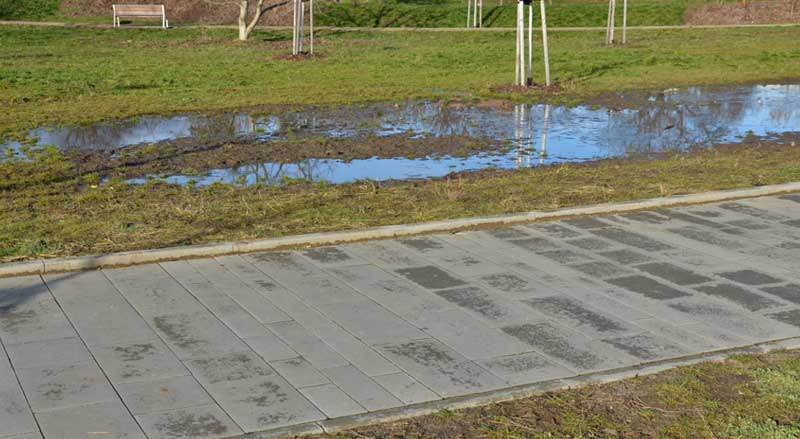
The Importance of Proper Drainage
- Prevents Water Pooling
- Standing watercan suffocate grass and plants, attract mosquitoes, and create unsightly, muddy areas.
- Protects Structures
- Excess water canseep into basements or crawl spaces, leading to mold growth and structural damage.
- Maintains Soil Integrity
- Poor drainage can lead tosoil compaction and loss of soil structure, hindering healthy root development.
Understanding Drainage Systems in Landscaping
Effective landscape drainage systems are designed to manage excess water by directing it away from areas where it can cause harm. They are broadly categorized into two types: surface drainage and subsurface drainage.
Surface Drainage
Surface drainage involves the removal of water from the land’s surface through drainage channels, ditches, or swales. This method is particularly effective in areas with heavy rainfall or low soil permeability, preventing water accumulation and soil erosion.
Subsurface Drainage
Subsurface drainage deals with the removal of excess groundwater through underground drainpipes or drain tiles. It prevents waterlogging, which can damage plant roots and compromise soil structure.
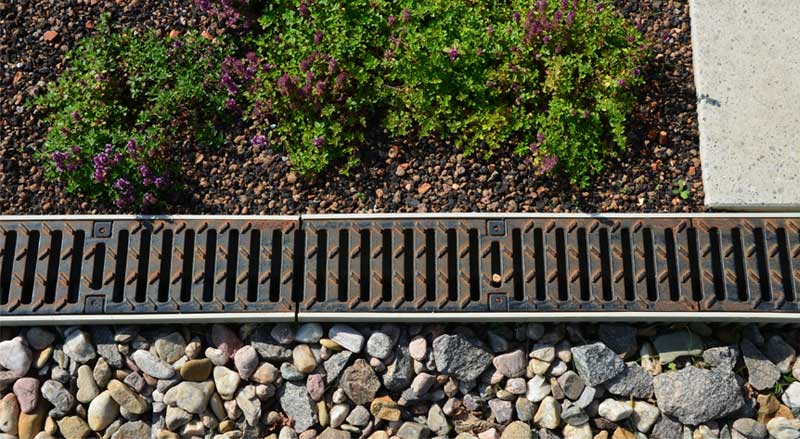
Common Drainage Solutions
- French Drains
- AFrench drain system is a popular yard drainage solution that consists of a perforated pipe surrounded by gravel and buried underground. It collects and redirects groundwater, preventing waterlogging and foundation damage.
2. Swales
- Landscape swalesare shallow, grass-lined or stone-filled channels designed to slow and direct rainwater runoff. They provide natural drainage solutions, preventing yard flooding and promoting groundwater recharge.
3. Dry Wells
- Underground structures thatcollect and store excess rainwater, allowing it to gradually infiltrate into the surrounding soil and prevent flooding in low-lying areas.
4. Rain Gardens
- Rain gardensare shallow, planted depressions that absorb and filter stormwater runoff from roofs, driveways, and sidewalks. They enhance landscape aesthetics and support local ecosystems.
5. Surface Drains
- Catch basins and channel drains are essential for collecting surface water and directing it into underground drainage systems. These are ideal for driveways, patios, and other flood-prone areas.
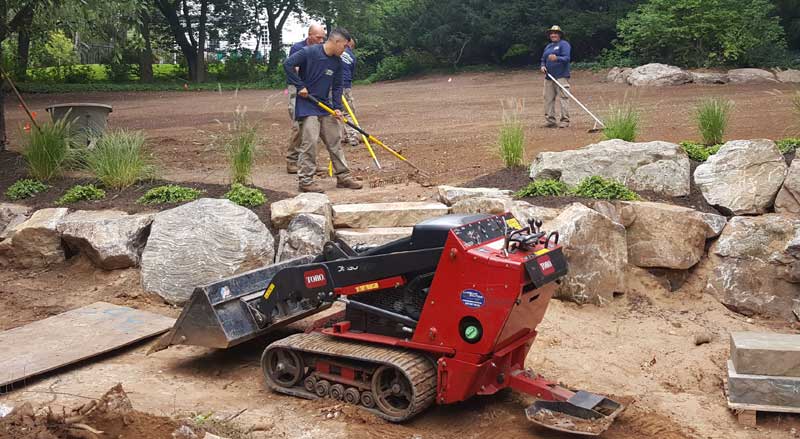
Implementing Proper Grading and Drainage
Achieving effective yard drainage requires careful assessment and planning:
- Site Assessment
- Evaluate yourproperty’s slope, soil type, and existing drainage issues to determine the best drainage solutions.
2. Design a Grading Plan
- Develop agrading plan that directs water away from structures and prevents pooling. A 2% slope (a 2-foot drop over 100 feet) is generally recommended for proper yard drainage.
3. Install Drainage Systems
- Implement appropriatelandscape drainage solutions, such as French drains, swales, dry wells, or rain gardens, to effectively manage excess water.
4. Regular Maintenance
- Keepdrainage systems clear of debris, monitor for erosion or water pooling, and adjust grading as necessary to maintain optimal performance.
Conclusion
Proper grading and drainage are essential components of a healthy, functional, and attractive landscape, especially during the heavy rains of spring in New Jersey. By directing rainwater runoff appropriately, you protect your home’s foundation, preserve soil health, and create a more enjoyable outdoor environment. Investing in these foundational landscape elements not only enhances curb appeal but also increases property value and longevity.
The Role of Professional Expertise
While some yard drainage solutions can be managed by homeowners, complex drainage issues often require professional intervention. Experienced landscapers possess the expertise and equipment to design and implement custom drainage solutions tailored to your property’s unique landscape challenges.
For expert assistance in landscape grading and drainage solutions, contact Landscape Solutions today to schedule a consultation. Our team of drainage specialists is ready to create a customized plan to protect your yard from spring flooding and water damage.

